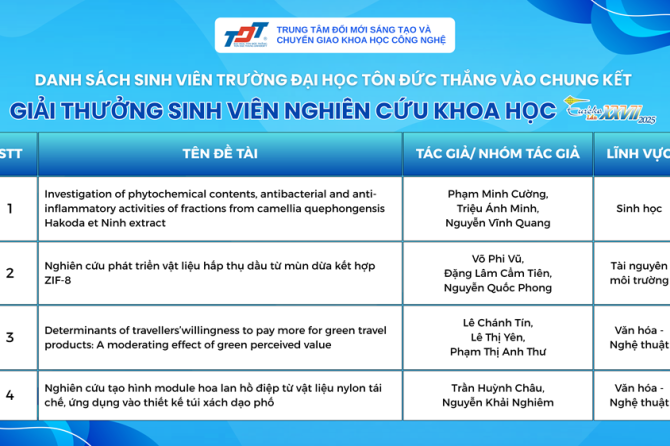Innovation - The Inevitable Driver of Viet Nam’s Economic Development in a Rising Era
Speaking at the forum “Promoting the Creative Potential of the Workforce”, held during the National Innovation Day 2025 on August 15 in Ha Noi, Comrade Tran Cam Tu - Member of the Politburo, Permanent Secretary of the Secretariat, and Deputy Head of the Central Steering Committee on Science and Technology, Innovation and Digital Transformation - emphasized:
“Innovation is no longer a choice, but an inevitable path for our country to develop rapidly, sustainably and with its own identity.”

This is not only a political statement, but also a strategic message for Viet Nam’s development path in the era of global integration and competition.
Why is innovation an “inevitable path”?
Looking back, Viet Nam rose from a poor, underdeveloped agricultural country that survived devastating wars to become one of the most dynamic economies in the region just 30 years after the Đổi mới reforms (1986). However, a question now arises: Can traditional drivers such as low-cost labor, natural resources or OEM exports continue to sustain future growth?
The clear answer is no. In the context of the Fourth Industrial Revolution, those factors are losing their competitive advantage. The true strength of an economy no longer lies in the number of workers, but in the creativity of its people and its ability to master knowledge and technology. In fact, during 2016-2020, Total Factor Productivity (TFP) - a key indicator of innovation - contributed 45.2% to GDP growth (exceeding the target of 30-35%), clearly proving that innovation has become a core driver of Viet Nam’s economic development.
Viet Nam’s Position on the Global Innovation Map
According to the World Intellectual Property Organization (WIPO), Viet Nam ranked 44th out of 133 countries in the Global Innovation Index 2024, placing 3rd in ASEAN, after Singapore and Malaysia. This is a major improvement compared to 76th place in 2013.
The country currently has:
- 4,000 innovative startups;
- 200+ venture capital funds;
- 84 startup incubators;
- 20 innovation support centers
Beyond these numbers, many Vietnamese companies have made a mark internationally - from fintech and e-commerce to agri-tech and artificial intelligence. Names such as MoMo, VNPay, VNG and a range of logistics and smart agriculture startups have proven their competitiveness in regional markets.
But the question remains: Is this enough for Viet Nam to become an “innovation nation” in the next decade?
People - The Center of Innovation
In his speech on August 15, Comrade Tran Cam Tu emphasized that “Vietnamese workers are diligent, eager to learn, intelligent and full of aspiration.”
This is the foundation that allows innovation to become an internal strength. From factory workers with cost-saving initiatives, to young scientists driven by research passion, and startup founders determined to conquer global markets - all are part of an increasingly strong creative current.
However, reality shows that the quality of human resources in Viet Nam still falls short of demand. According to the World Bank, only around 11% of Vietnamese workers are properly trained with technological skills - a major gap that must be bridged quickly in order to turn “innovation ambition” into “competitive strength”.
Policy as the Enabler: From Resolution to Action
Resolution No. 57-NQ/TW (December 22, 2024) of the Politburo identifies science, technology, innovation and digital transformation as a top national policy and a key driver for rapid and sustainable development.
By 2045, Viet Nam aims to:
- Become a developed, high-income country;
- Be among the top 30 countries in global innovation;
- Have the digital economy contribute 50% of GDP.
To achieve these goals, the Government is implementing multiple measures:
- Improving legal and institutional frameworks to encourage enterprise investment in R&D;
- Increasing public expenditure on science and technology, prioritizing core, digital and green technologies;
- Promoting high-tech human resource training through educational reform and the development of research-oriented universities;
- Attracting high-quality FDI tied to technology transfer.
In the new era, innovation is truly the “passport” that will enable Viet Nam to join the ranks of developed nations. It is not only a political orientation but a call of the times and a national aspiration.By nurturing creativity in every individual, every enterprise and throughout society, Viet Nam can turn challenges into opportunities and transform aspirations into reality - rising strongly to stand shoulder to shoulder with the world’s leading nations by 2045.
Sources:
- VnEconomy (2024). Innovation as the Inevitable Choice for National Development;
- Nhan Dan Newspaper (2024). Building a National Innovation Ecosystem;
- Communist Review (2024). Innovation - The Key Driver of Viet Nam’s Economic Growth;
- Tia Sang Journal (2023). Global Innovation Index: Viet Nam Continues to Improve its Ranking
- Resolution No. 57-NQ/TW (2024) of the Politburo on the Development of Science & Technology, Innovation and Digital Transformation by 2045.





